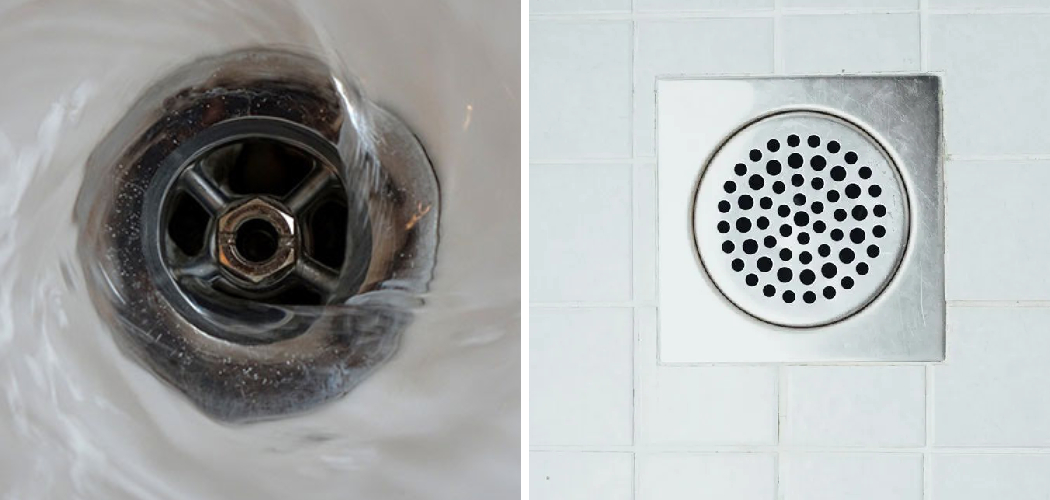A frozen shower drain can be a frustrating issue that many homeowners encounter during the colder months. When water gets trapped in the drain and freezes, it can lead to clogs and potential damage to your plumbing system. Understanding the causes of a frozen shower drain and knowing the steps to fix it can save you time, money, and stress. In this guide, we will explore effective methods for how to fix a frozen shower drain, as well as preventative measures to keep your plumbing clear during winter.
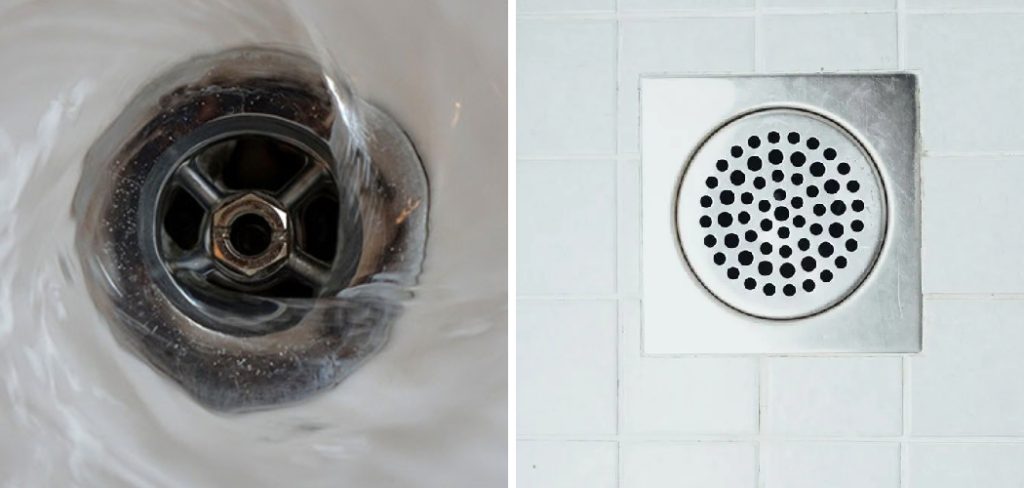
What Causes a Shower Drain to Freeze
Several factors can contribute to a shower drain freezing during the winter months. First and foremost, a drop in outdoor temperatures can lead to the cooling of pipes, especially if they are poorly insulated or located in unheated areas of the home, such as basements or crawl spaces. Additionally, if the shower drain is clogged with hair, soap residues, or debris, it can trap water, making it more susceptible to freezing. Lastly, prolonged periods of inactivity in your plumbing system, such as during vacations or extended cold spells, can also lead to stagnant water in the pipes, increasing the risk of freezing. Being aware of these causes can help you take preventative measures to protect your plumbing from winter-related issues.
Understanding the Causes
Understanding the causes of a frozen shower drain is crucial for effective prevention and resolution. One significant factor is the impact of low temperatures on plumbing systems, particularly in areas of the home that are not heated. Insufficient insulation around pipes can exacerbate this issue, allowing the cold to penetrate and freeze any standing water. Additionally, clogs in the drain not only prevent water from flowing freely but also create pockets where water can stagnate.
Common culprits include hair, soap scum, and other debris that accumulate over time. Finally, seasonal changes and extended periods of inactivity, such as when a house is unoccupied, can lead to water sitting idle in the drain, further increasing the likelihood of freezing. By recognizing these causes, homeowners can take proactive steps to safeguard their plumbing against freezing temperatures.

10 Methods How to Fix a Frozen Shower Drain
1. Identify the Frozen Section of the Drain
Before attempting any repair, it’s important to identify which part of the drain is frozen. The blockage can occur in the drainpipe leading directly from the shower, in the plumbing beneath the floor, or in an outdoor pipe connected to the main drainage system. Signs of a frozen shower drain include slow drainage, water backing up into the shower, and gurgling sounds when water is draining. If you suspect the blockage is in an outdoor pipe, check for visible frost or ice buildup near the outdoor drain vents. Knowing where the freeze is located helps you choose the best method for thawing.
2. Turn Off the Water Supply
Before starting any work on your frozen shower drain, it’s crucial to turn off the water supply to prevent accidental flooding or additional water backup. While it may not be necessary to shut off the entire home’s water, turning off the supply to the shower or bathroom can be helpful. This ensures that no extra water enters the pipes while you’re trying to thaw the blockage, which can worsen the situation. Once the water is off, drain any remaining water from the shower by using a bucket or towels to remove excess moisture.
3. Use a Hairdryer for Gentle Thawing
One of the simplest methods to thaw a frozen shower drain is to use a hairdryer. A hairdryer allows you to apply gentle heat directly to the frozen pipe or drain without causing damage. Begin by removing the shower drain cover, and position the hairdryer about six inches away from the pipe. Turn it on at a low or medium heat setting and move it in a circular motion around the pipe to evenly distribute heat. Be careful not to apply too much heat in one spot, as this can crack or warp plastic pipes. This method is effective for shallow freezes or drains located inside the bathroom walls.
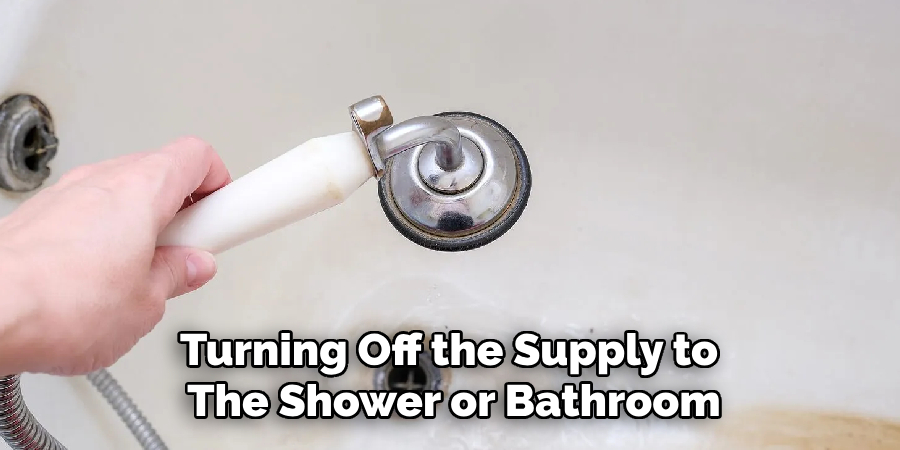
4. Pour Hot Water Down the Drain
If the frozen section is close to the drain opening, pouring hot water directly down the shower drain can help melt the ice. Boil water in a kettle or pot, then slowly pour it into the drain. Avoid using boiling water if your plumbing is made of PVC, as extreme temperatures could damage the pipes. Instead, use water that’s hot but not boiling. Repeat this process several times, allowing the hot water to sit in the drain for a few minutes each time to soften the ice. For more stubborn blockages, this method can be combined with other techniques, such as using a hairdryer.
5. Try a Plumbing Snake or Drain Auger
If hot water and a hairdryer aren’t enough to break up the ice, using a plumbing snake or drain auger can help reach deeper into the frozen section of the drain. A plumbing snake is a long, flexible tool that can be fed into the drain to manually dislodge blockages, including ice. Insert the snake into the shower drain, turning the handle clockwise to push it through the ice. Once you feel resistance, gently rotate the snake to break up the ice. This method is especially useful if the freeze is located further down the drainpipe, beyond the reach of surface methods like hot water.
6. Apply Heat Tape to the Frozen Pipe
Heat tape is an effective solution for thawing frozen pipes, particularly if the freeze is in a section of pipe that’s accessible, such as under the floor or in a crawl space. Heat tape consists of an electrical cord that generates heat when wrapped around the pipe, gradually melting the ice inside. To use heat tape, wrap it around the affected portion of the pipe, plug it into an electrical outlet, and wait for the ice to melt. Be sure to follow the manufacturer’s instructions for safe use. This method works well for outdoor pipes or pipes located in uninsulated areas that are prone to freezing.
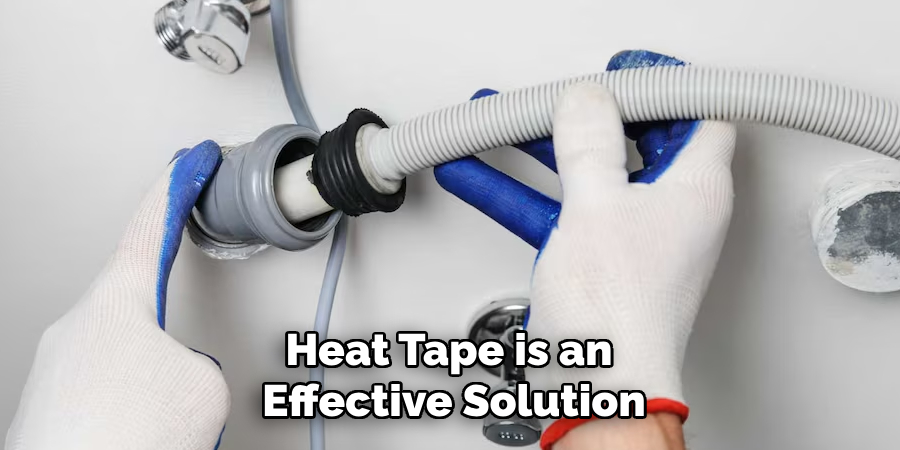
7. Use a Space Heater in the Bathroom
If you suspect the frozen drain is inside the bathroom walls or under the floor, using a space heater can help thaw the pipes without needing to apply direct heat. Position the space heater near the shower, pointing it toward the area where the plumbing runs. Turn the heater on at a moderate setting and allow it to warm the room gradually. As the temperature increases, the heat will penetrate the walls and floor, helping to melt the ice in the pipes. Be sure to monitor the heater and keep it away from flammable materials for safety.
8. Pour Saltwater Solution into the Drain
Saltwater is an effective natural deicer and can be used to thaw frozen shower drains. To create a saltwater solution, mix one cup of salt with a quart of hot water and stir until the salt dissolves completely. Slowly pour the solution down the shower drain, allowing the salt to work its way through the ice. The salt lowers the freezing point of water, helping to melt the ice and clear the blockage. This method works best for shallow freezes close to the drain opening and can be combined with hot water or a hairdryer for more stubborn blockages.
9. Insulate the Exposed Pipes
If your shower drain tends to freeze frequently, insulating the exposed pipes can help prevent future freezes. Foam pipe insulation is inexpensive and easy to install, providing a layer of protection against cold temperatures. Wrap the insulation around any pipes located in unheated areas, such as crawl spaces, basements, or along exterior walls. In addition to preventing frozen pipes, insulation helps maintain a consistent water temperature, reducing energy costs. For outdoor pipes or drains, consider using heat cables alongside insulation for added protection during winter months.
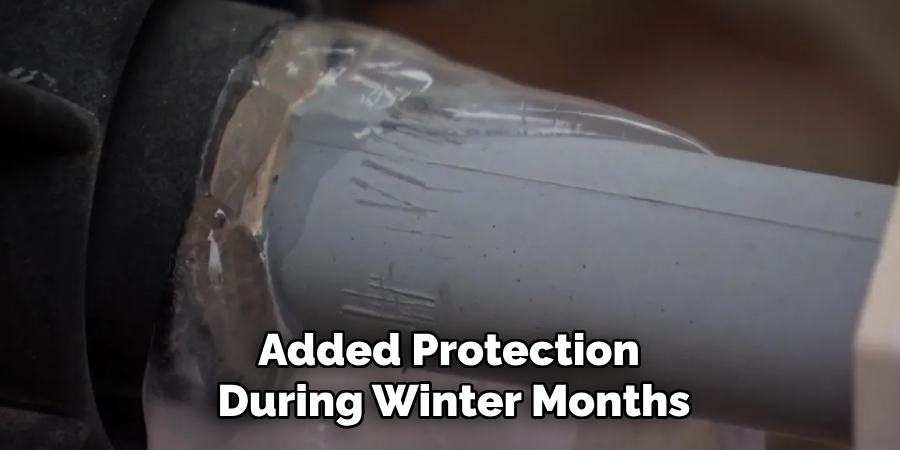
10. Use a Wet/Dry Vacuum to Remove Ice and Debris
If ice has caused water to back up into your shower, using a wet/dry vacuum can help remove excess water and debris from the drain. Start by setting the vacuum to “wet” mode and placing the hose over the drain opening. Turn on the vacuum and allow it to suck out any standing water or ice that may be clogging the drain. This method is useful for clearing away slushy ice or ice that’s begun to melt. After removing as much water as possible, try one of the other thawing methods, such as hot water or a hairdryer, to fully clear the blockage.
Conclusion
In conclusion, addressing a frozen shower drain requires a combination of techniques and preventive measures to ensure effective thawing and to avoid future occurrences. By employing methods such as using a hairdryer, pouring hot water, or applying heat tape, homeowners can successfully resolve temporary blockages. Additionally, insulating exposed pipes and maintaining proper heating in vulnerable areas can significantly reduce the risk of freezing.Thanks for reading, and we hope this has given you some inspiration on how to fix a frozen shower drain!

